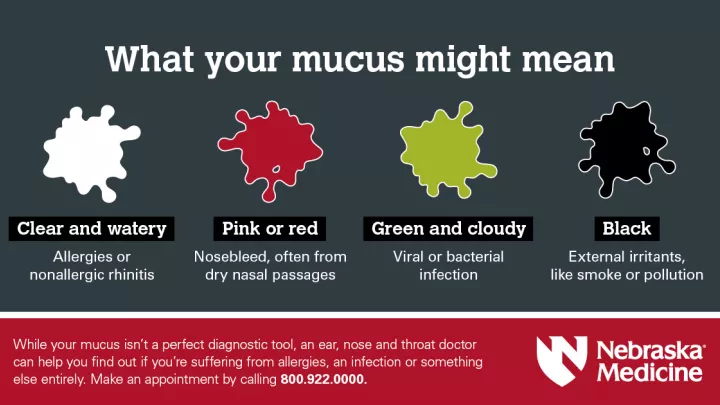Will nasal spray relieve my allergies, runny nose, congestion and other sinus issues?

Saline sprays, corticosteroids, antihistamines and decongestants – oh, my! There are several over-the-counter and prescription nasal sprays on the market. Knowing which one to use – and how – is key to ensuring you get the best results, whether you're dealing with allergies, a sinus infection or a cold. Below, we explain the different types of nasal sprays and how to use them.
Types of nasal sprays
Nasal spray works by spraying medication or saline directly into your nose to relieve congestion and symptoms of seasonal allergies, sinus infections or the common cold.
Options include:
- Saline spray – Saline nasal sprays contain a mixture of water and salt. They are designed to lubricate and flush out nasal passages, relieving nasal dryness, nosebleeds and congestion associated with seasonal allergies or other conditions. They do not contain medication, making them safe for people of all ages, including anyone pregnant or nursing. They are also an excellent option for people with nose piercings. Unlike other nasal sprays, saline sprays can be used regularly since they don't contain medication.
- Corticosteroid – A nasal corticosteroid, or nasal steroid, is a medication sprayed into your nose to relieve stuffiness, irritation or discomfort associated with allergies and other sinus problems. Some are available over the counter, while others require a prescription. The recommended dosage for adults and children 12 years or older is two sprays in each nostril one to two times a day for up to four weeks.
- Antihistamine – Antihistamines work to suppress allergy symptoms – like a runny nose, sneezing and watery eyes – by blocking the effects of histamine. However, they only have a modest effect on congestion, which is why they're often combined with other treatments. They may also cause drowsiness. Most are safe to use when pregnant or nursing, but it's best to check with your doctor first.
- Decongestant – Decongestant nasal sprays shrink swollen blood vessels and tissues to relieve congestion, but they can't help with sneezing or itching. Many are available without a prescription. However, they are not intended for children under 12 or anyone pregnant or nursing. Additionally, you should not use decongestants for more than three days in a row, as frequent use can cause rebound congestion.
How to use nasal spray
Below are directions for using a pump-bottle nasal spray correctly:
- Blow your nose gently to remove mucus.
- Wash your hands with soap and water.
- Gently shake the bottle of nasal spray and remove the cap.
- Tilt your head back slightly.
- Plug one nostril by gently pressing against the side of your nose with your finger.
- Gently insert the tip of the nasal spray bottle into the other nostril.
- Point the tip toward the back, outer side of your nose. Make sure to direct the spray straight back, not up into the tip of your nose, as it can injure your nose.
- Squeeze the nasal spray bottle as you slowly breathe in the liquid.
- Remove the nasal spray bottle from your nose and exhale through your mouth.
- Repeat these steps for your other nostril if needed.
- Wipe the tip of the nasal spray with a tissue or alcohol pad, and then reapply the cap.
- Avoid sneezing or blowing your nose immediately after using the nasal spray.
When used correctly, nasal sprays should not cause nosebleeds. As mentioned above, inserting the tip in the wrong direction could injure your nose. If you experience a nosebleed, you should contact your doctor to ensure you're using the product correctly. Additionally, the solution should not drip down your nose or the back of your throat. However, some nasal sprays can leave an unpleasant taste in your mouth. If you experience this, try taking a sip of water or juice to diminish the aftertaste.
A rebound effect can occur if you use over-the-counter nasal decongestants regularly. After a few days of using this type of nasal spray, your nose may become less responsive to the medication. As a result, you may need to use more of it to control your congestion. Your congestion may also worsen if you stop using the medication. Some people may mistake this rebound effect for addiction, but it isn't.
Choosing the right nasal spray for your condition
If you're not sure which nasal spray is right for you; it's a good idea to consult a doctor. Otolaryngologists, also known as ear, nose and throat specialists or ENT doctors, are specially trained in the diagnosis and treatment of ear, nose and throat conditions. Depending on your situation, they may recommend a combination of nasal treatments to relieve your symptoms. In any case, it's important to understand the recommended protocol to ensure you get the best results.
"Unfortunately, some patients who are prescribed nasal steroids in conjunction with saline sprays mistakenly use the steroids first," says Tony Richa, MD, Nebraska Medicine head and neck surgeon. "It's important to use the saline spray first, then follow with the steroid. If you use the spray after the steroid, you're essentially washing out the medication, which defeats the purpose."







